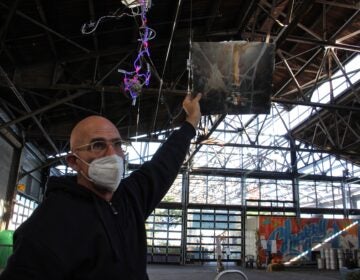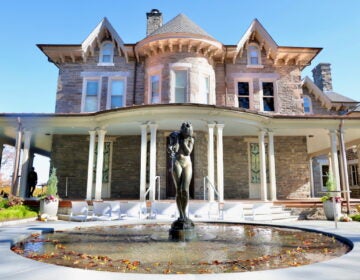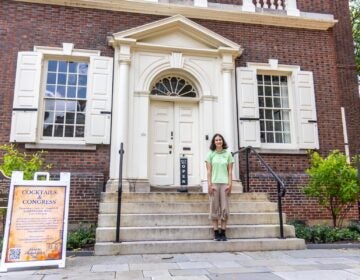WPA poster art on view at historic Carpenters’ Hall
Federal travel posters designed in the Depression-era pop up as the 18th-century building gears up for big anniversaries.
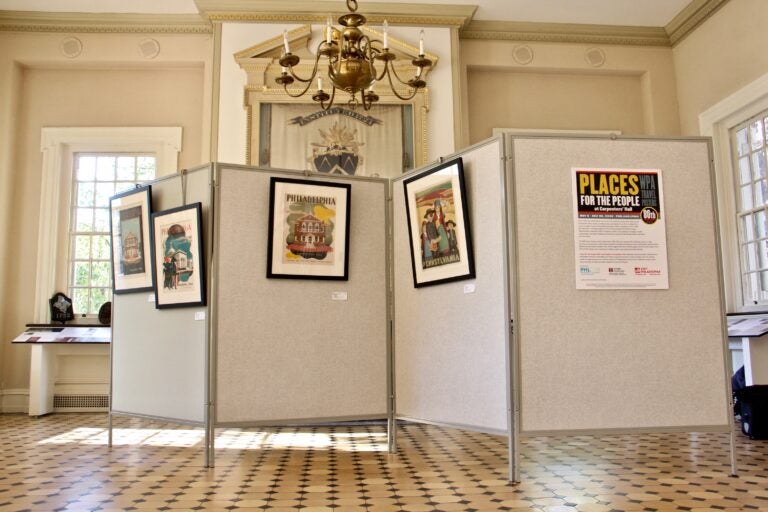
"Places for the People: WPA Travel Posters," at Carpenters' Hall celebrates rare local posters created to promote tourism in and around Philadelphia during the 1930s and 1940s. (Emma Lee/WHYY)
Four years from now, the Carpenters’ Company — owner and operator of historic Carpenters’ Hall in Independence National Historical Park — will celebrate both the 250th anniversary of the first revolutionary-era Continental Congress meeting inside the hall and the 300th anniversary of its own founding.
“It’s a very big year for us,” said executive director Michael Norris. “We’re well underway with plans.”
It will be followed two years later by citywide celebrations around the 250th anniversary of the Declaration of Independence.

To prime the pump for these commemorations, Carpenters’ Hall has just opened a small, pop-up exhibition of posters designed in the 1930s and ’40s by the Federal Art Project, a unit of the Works Progress Administration (WPA). This is the first exhibition in Norris’ memory of material not directly related to the history of the building.
“I wanted to send a signal to the community that we are interested in a larger programmatic lens,” said Norris.
There are nine original prints of WPA posters hung on folding partitions in the hall’s main entrance room, depicting iconic Philadelphia buildings of the 1930s, including Independence Hall, the Betsy Ross House, Old Swedes Church, Memorial Hall (now the Please Touch Museum), and Nio-mon Japanese Temple Gate in Fairmount Park (destroyed by a fire in 1955 where the Shofuso House now stands).
At that time, the posters were made as part of a national effort to promote tourism, an industry the federal government was attempting to stimulate after the Great Depression.
“It was a twofer approach: to boost up the connection to the U.S. as a strong place, encouraging people to get out there and discover what’s in the U.S.,” said curator Ennis Carter. “And to get the economy moving again.”
During the era of the Federal Art Project (1935–1943), about 500 artists and illustrators were hired to design an estimated 35,000 posters, on a wide range of topics including public health, workplace safety, theater productions and national parks.
Carter, director of the Social Impact Studios design company, also runs “Posters for the People,” an ongoing project to identify and archive as many existing poster designs as possible. She said the Library of Congress saved just 1,300 poster designs, and there are about another 800 floating around in state and private collections.
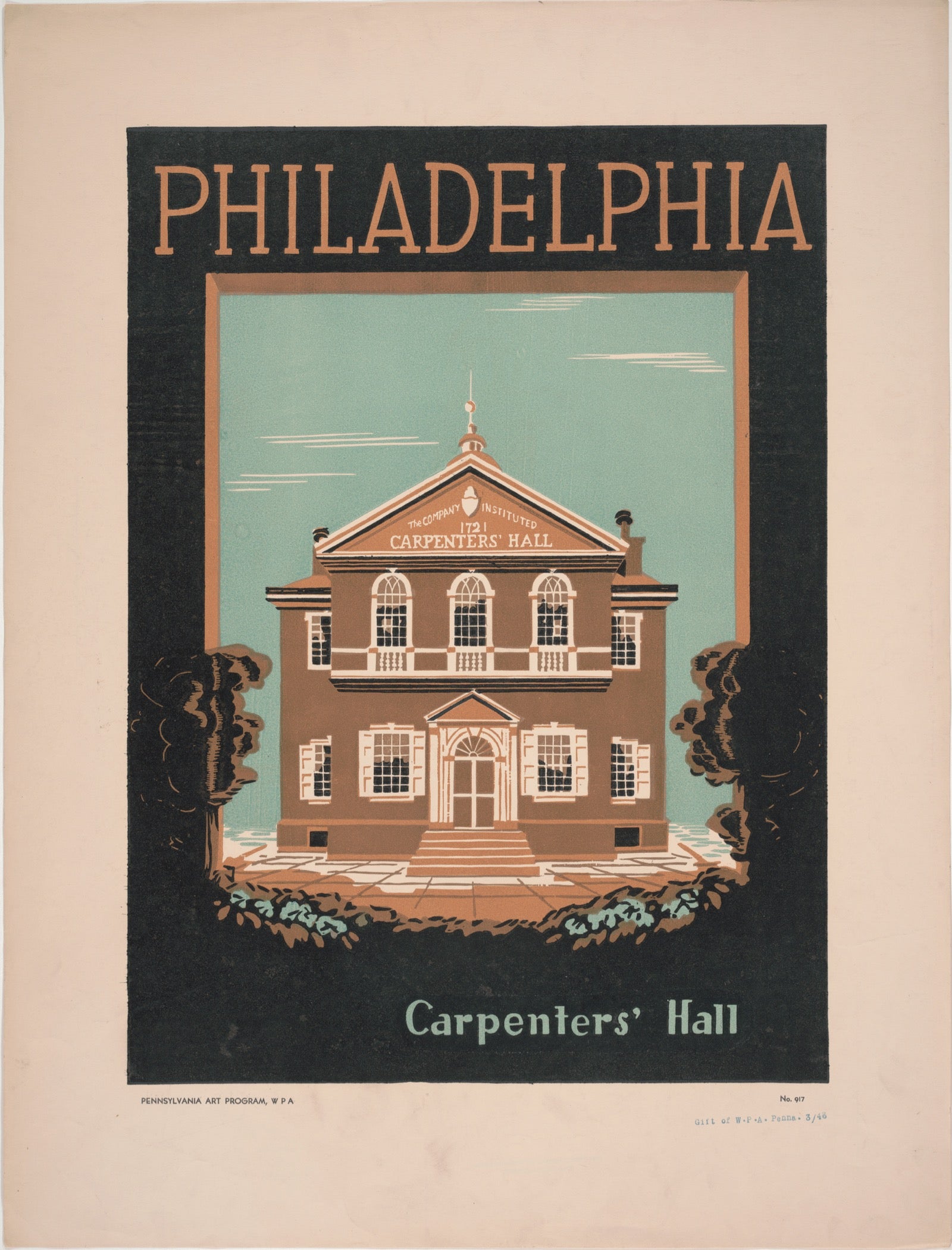
Once treated as disposable, the posters are now highly sought after by collectors for their historic importance and bold graphic impact. Many utilized the then-cutting-edge design principles of the legendary Bauhaus school in Germany.
“Also, screen printing was not popular before the WPA,” said Carter. “The screen-printing technology they advanced paved the way for Andy Warhol, Shepard Fairey, and [Sister] Corita Kent.”
Carter, herself, does not have a vast collection of WPA posters at her disposal — although one from her personal collection, by artist Katherine Milhous, is included in the Carpenters’ Hall exhibition. She sets up poster exhibitions wherever she is asked, with prints borrowed from public and private collections. For the Carpenters’ Hall show, most of the prints were borrowed from the Free Library of Philadelphia. Some have never before been seen publicly.
The show features two posters depicting Carpenters’ Hall. Norris favors one with a black border around the image of the building, providing a contrast framing.
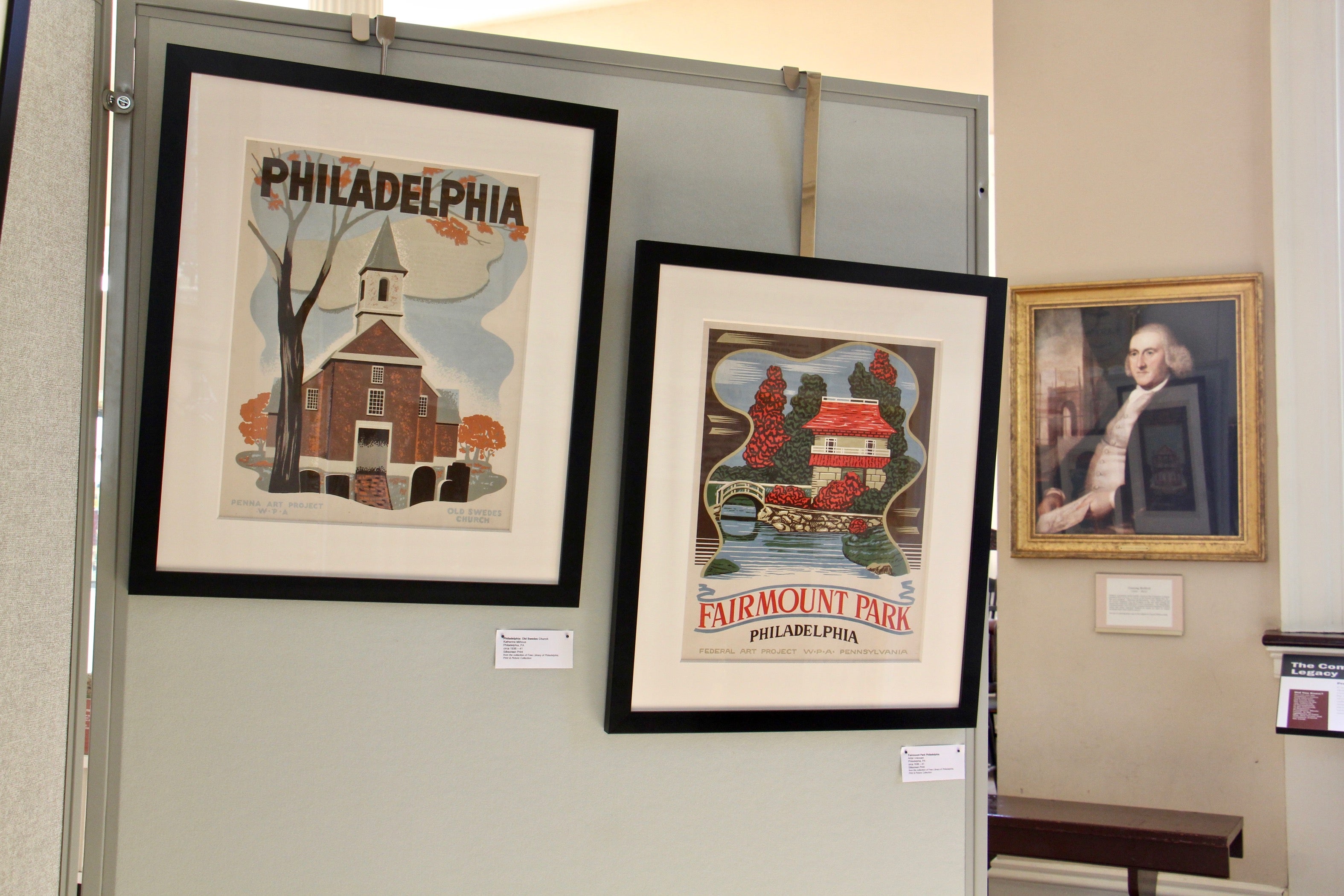
“I like that they are populist, in essence,” he said. “This is mass-produced art that is meant to engage a lot of people, not to sit on a wall in a museum.”
Norris also likes the poster because it highlights the architecture of the building. While mostly marketed as the site of the first Continental Congress in 1774 with artifacts on display that reflect that, the Carpenters’ Company is one of the oldest professional guilds in America, and its building is a highly regarded example of Georgian architecture in the United States.
Visitors who probe deeper into the hall’s exhibition will find material about the history of the American building trade, from a scale model of the hall being constructed to fire insurance medallions that used to identify colonial-era buildings that had disaster protection.
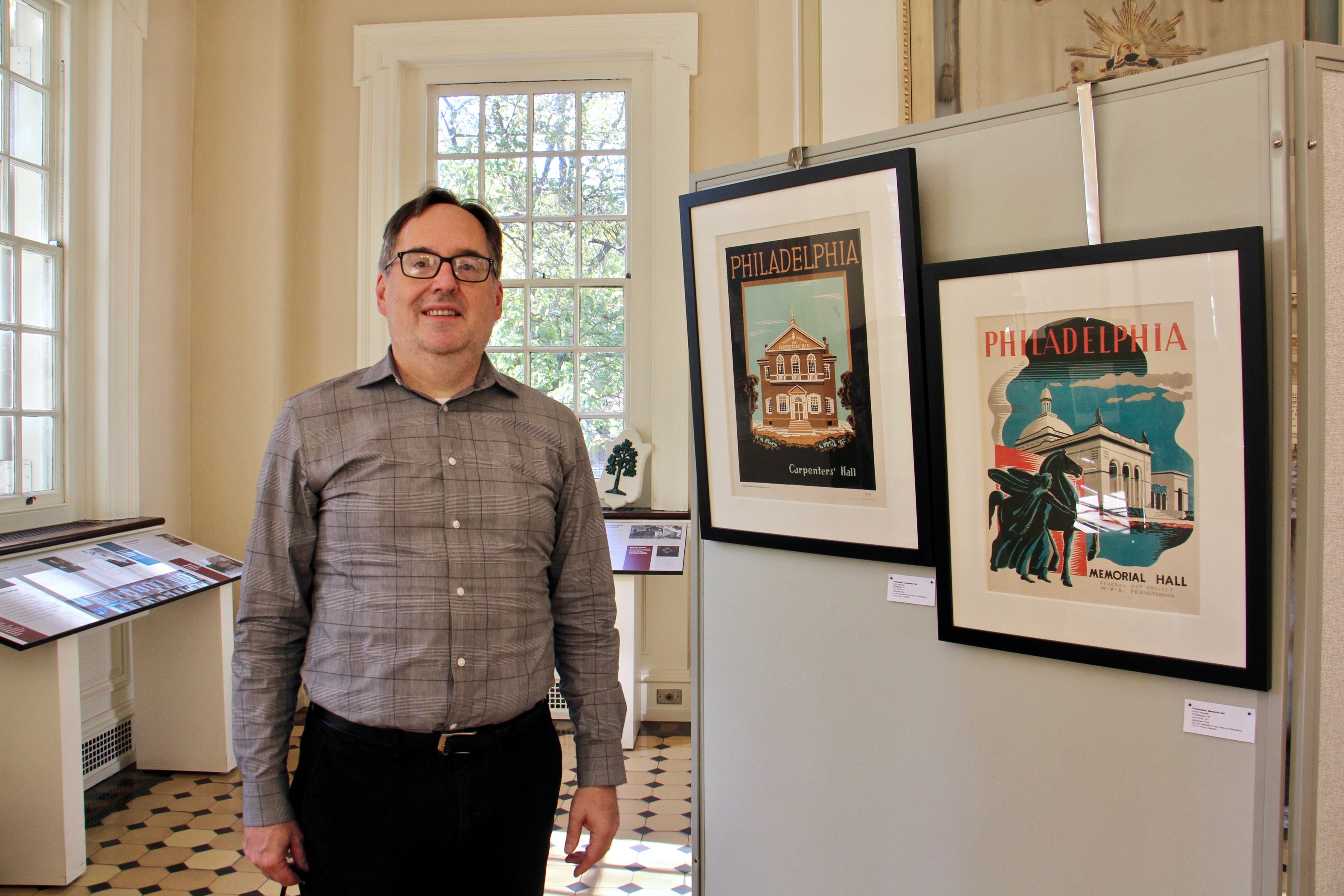
“The hall itself is our primary artifact,” said Norris.
The WPA poster exhibition will be up until the end of March. It is the first, small step toward more expansive programming as the Carpenters’ Company approaches its big anniversary milestones. Norris is partnering with other Philadelphia institutions that can trace their beginnings to Carpenters’ Hall, not just the birth of the United States.
“The University of the Sciences started at Carpenters’ Hall in 1821. They’re celebrating their bicentennial next year,” he said. “The Franklin Institute had its first exhibition here in 1824. All those kinds of connections will lend themselves to different kinds of exhibits.”

Get daily updates from WHYY News!
WHYY is your source for fact-based, in-depth journalism and information. As a nonprofit organization, we rely on financial support from readers like you. Please give today.



